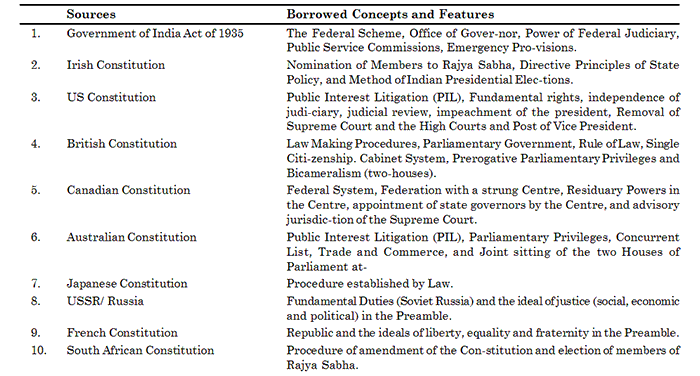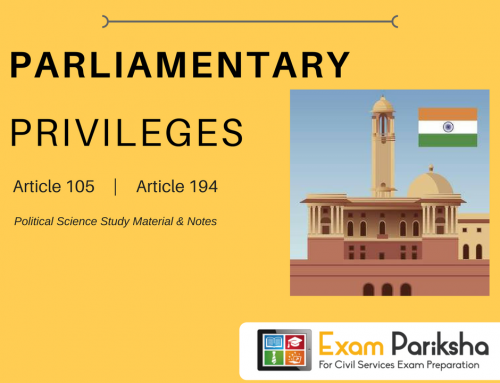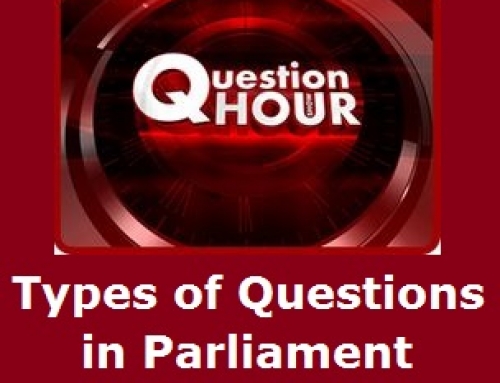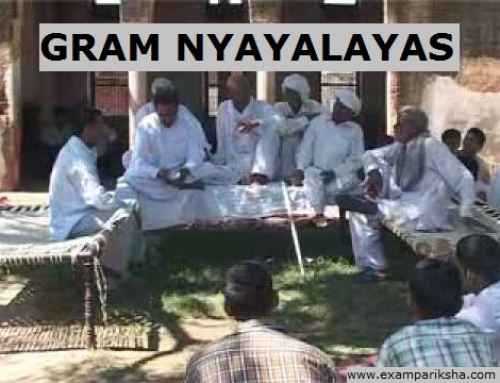Making of the constitution
The Constitution of India was framed by the Constituent Assembly which was constituted in 1946 under the Cabinet Mission Plan.
There were proposed 292 members of the Constituent Assembly to be indirectly elected by the members of the existing Provincial Assemblies by the method of proportional representation with single transferable vote. In addition, there were 93 members nominated by the rulers of the Princely States. Seats in each province were distributed among three main communities- General, Muslim, Sikh proportional to their population.
Following the partition of the country in 1947, the membership of the assembly was reduced to 299 members. Of these 229 members were elected by the provincial assemblies and the rest were nominated by the rulers of the princely states. Majority members belonged to the Congress party.
The senior most member Dr. Sachidananda Sinha was selected as the temporary President of the Assembly. Thereafter, the President of the Assembly Dr. Rajendra Prasad was elected as the President of the Assembly.
The Assembly worked with the help of a large number of committees and sub-committees. The committees were of two types :
- (a) relating to matters concerning with procedures,
- (b) concerning important issues.
The most important committee was the Drafting Committee. Dr. B.R. Ambedkar was the Chairman of the Drafting Committee.
The Constituent Assembly met for 166 days spread over a period of 2 years 11 months and 18 days. There were 11 sessions of the assembly.
IMPORTANT COMMITTEES OF THE CONSTITUENT ASSEMBLY AND THEIR CHAIRMEN
| Name of the Committee | Chairman |
| Committee on the Rules of Procedure | Rajendra Prasad |
| Steering Committee | Rajendra Prasad |
| Finance and Staff Committee Rajendra Prasad | Rajendra Prasad |
| Credential Committee | Alladi Krishnaswami Ayyar |
| House Committee | B. Pattabhi Sitaramayya |
| Order of Business Committee | K.M. Munsi |
| Ad hoc Committee on the National Flag | Rajendra Prasad |
| Committee on the Functions of the Constituent Assembly | G.V. Mavalankar |
| States Committee | Jawaharlal Nehru |
| Advisory Committee on Fundamental Rights, Minorities and Tribal and Excluded Areas | Vallabhbhai Patel |
| Minorities Sub-Committee | H.C. Mookherjee |
| Fundamental Rights Sub-Committee | J.B. Kripalani |
| North-East Frontier Tribal Areas and Assam Exluded & Partially Excluded Areas Sub-Committee | Gopinath Bardoloi |
| Excluded and Partially Excluded Areas (Other than those in Assam) Sub-Committee | A.V. Thakkar |
| Union Powers Committee | Jawaharlal Nehru |
| Union Constitution Committee | Jawaharlal Nehru |
| Drafting Committee | B.R. Ambedkar |
The ‘Objectives Resolution’ was moved by Jawahar Lal Nehru in the Constituent Assembly on December 17, 1946 which was almost unanimously adopted on January 22, 1947.
Jan. 26, 1930 was decided in the Lahore session of the Congress in Dec 1929 to celebrate as Independence Day. Hence, January 26, 1950 was decided as the day to enforce the constitution to commemorate the first independence day celebration.[/box]
It reads –
- This Constituent Assembly declares its firm and solemn resolve to proclaim India as an Independent Soverign Republic and to draw up for her future governance a Constitution;
- WHEREIN the territories that now comprise British India, the territories that now form the Indian States, and such other parts fo India as are outside British India and the States as well as such other territories as are willing to be constituted into the Independent Soverign India, shall be a Union of them all; and
- WHEREIN the said territories, whether with their present boundaries or with such others as may be determined by the Constituent Assembly and thereafter according to the law of the Constitution, shall possess and retain the status of autonomous Units, together with residuary powers and exercise all powers and functions of goverrnment and administration, save and except such powers and functions as are vested in or assigned to the Union, or as are inherent or implied in the Union or resulting therefrom; and
- WHEREIN all power and authority of the Soverign Independent India, its constituent parts and organs of government, are derived from the people; and
- WHEREIN shall be guaranteed and secured to all the people of India justice, social economic and political : equality of status, of opportunity, and before the law; freedom of thought, expression, belief, faith, worship, vocation, association and action, subject to law and public morality; and
- WHEREIN adequate safeguards shall be provided for minorities, backward and tribal areas, and depressed and other backward classes; and
- WHEREBY shall be maintained the integrity of the territory of the Republic and its soverign rights on land, sea, and air according to justice and the law of civilized nations; and
- This ancient land attains its righful and honoured placed in the world and make its full and willing contribution to the promotion of world peace and the welfare of mankind.
This Resolution was unanimously adopted by the Constituent Assembly on 22 January 1947. In the light of these ‘Objectives’ the Assembly completed the task of constitution making by November 26,1949. The constitution was enforced with effect from January 26, 1950. From that day, India became a Republic.
Sources of Indian Constitution:






Excellent and to the point knowledge is the key feature of your study material. Very helpful and time saving for all the civil services aspirants. Keep on posting the new material in GA and CA sections.
Really helpful.
Thanks a lot for your contribution.